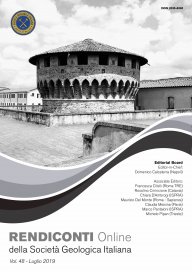
Assessment of Water Harvesting impacts on water conservation by integrating Landsat 7 and CHIRPS datasets in Google Earth Engine platform
Giulio Castelli (1) & Elena Bresci (1)
(1) Department of Agriculture, Food, Environment and Forestry (DAGRI), Università degli Studi di Firenze.
Corresponding author e-mail: giulio.castelli@unifi.it
DOI: https://doi.org/10.3301/ROL.2019.37
Volume: 48/2019
Pages: 47-53
Abstract
Computational capabilities of online cloud-based platforms offered a dramatic increase of the possibilities in the field of geosciences. The novel Google Earth Engine (GEE) platform is among the most powerful and innovative tools, making available both a cloud computational system and wide collections of available satellite remote sensing datasets. This paper presents the GEE analysis of the impacts of Landscape Restoration and Water Harvesting (LRWH) on water conservation potential of a pilot catchment in Tigray Region, Ethiopia. A synthetic Water Conservation Index (WCI) was defined as a function of monthly average Normalized Different Infrared Index (NDII), obtained by Landsat 7 Tier 1 8-Day Composites, and the rainfall amount of June, July and August, calculated from pentadal Climate Hazards Group InfraRed Precipitation with Station data
(CHIRPS) dataset. Results showed a substantial increase of the WCI after the rainy season for September, with a statistical significance of p<0.01, and for October and November WCI, with a lower statistical significance. Results showed the increase in water conservation obtained through LRWH for Enabered watershed and made clear the new possibilities offered by available ICT structures and cloud-based
systems for geosciences, in particular for supporting environmental analysis and land planning in remote and data-scarce areas.
Keywords
Arid Environments, Cloud Based Computation, Ethiopia, Landscape Restoration and Water Harvesting (LRWH), Remote Sensing, Tigray Region.
Get Full Text